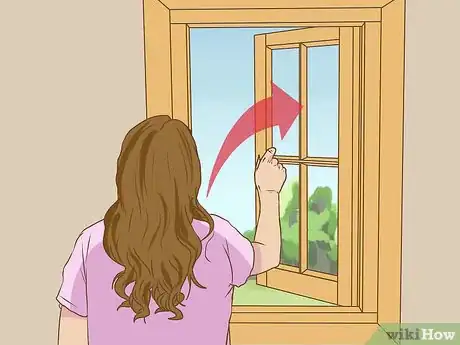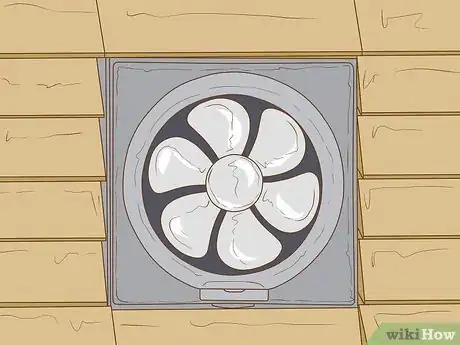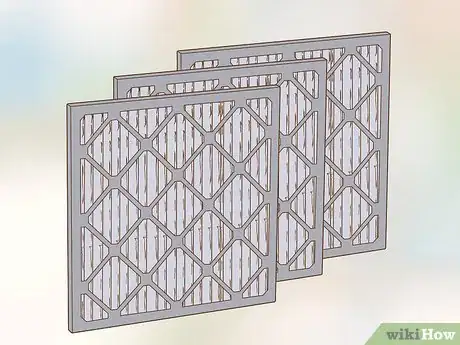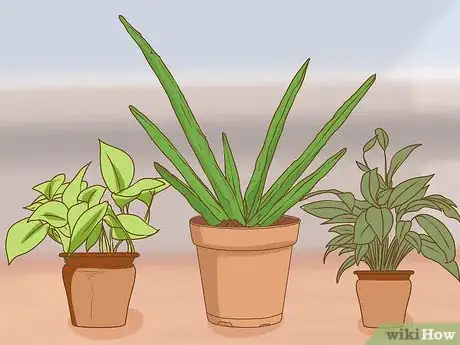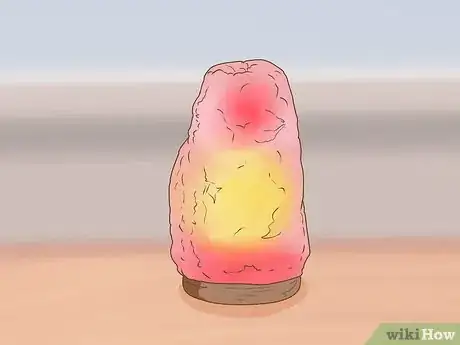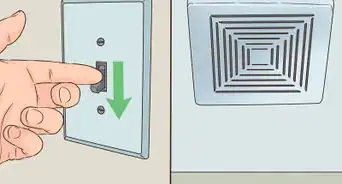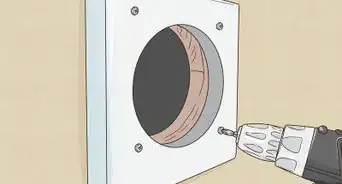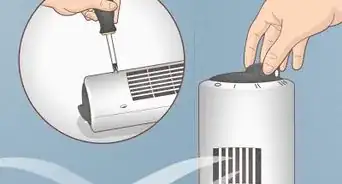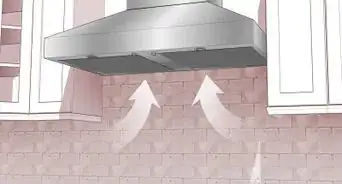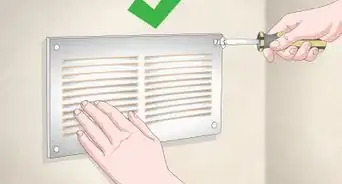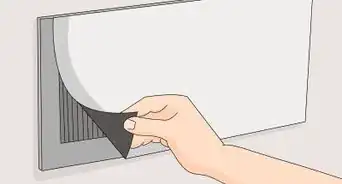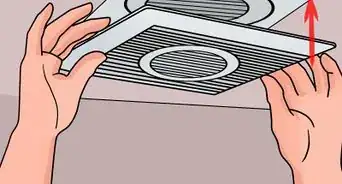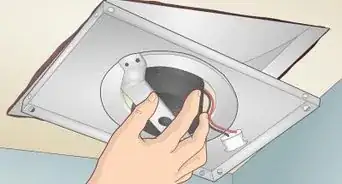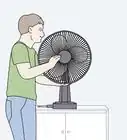This article was medically reviewed by Sarah Gehrke, RN, MS. Sarah Gehrke is a Registered Nurse and Licensed Massage Therapist in Texas. Sarah has over 10 years of experience teaching and practicing phlebotomy and intravenous (IV) therapy using physical, psychological, and emotional support. She received her Massage Therapist License from the Amarillo Massage Therapy Institute in 2008 and a M.S. in Nursing from the University of Phoenix in 2013.
There are 14 references cited in this article, which can be found at the bottom of the page.
wikiHow marks an article as reader-approved once it receives enough positive feedback. In this case, 89% of readers who voted found the article helpful, earning it our reader-approved status.
This article has been viewed 127,564 times.
If you’re struggling with a chronic illness like COPD, heart failure, or sleep apnea, increasing your oxygen at home can help improve your symptoms.[1] Even the healthiest people can benefit from improving air circulation and removing pollutants from the air at home. Depending on your needs and goals, you can increase your home’s oxygen levels by bringing in plants and other natural elements and improving ventilation in your home. For specific physical ailments, your doctor can prescribe the use of special medical equipment.
Steps
Ventilating Your Home
-
1Open your windows. You may spend a lot of time indoors, especially in the winter. Open a window in your home to allow fresh, oxygenated air inside. If it’s warm enough, open two windows on opposite sides of your home to increase air circulation.[2] Try to open your windows for a few minutes 3 times a day, even in winter.[3]
- If you live in a cold or polluted area and don’t want to open your windows much, then only crack them at times when you’re creating moisture.[4] Open the window a bit while cooking dinner or taking a shower to prevent moisture build-up in the air.
- If you have outdoor allergies, you can buy clean air window screens that filter out birch pollen, grass pollen, and ragweed so that you can make sure that there’s enough airflow in your home without giving yourself an allergic reaction.[5] If you have outdoor allergies, also be sure to pay attention to pollen levels to determine when you should open the windows more frequently and when you should open them more sparingly.
-
2Close your closet doors. When you open your doors or windows to let in fresh air, close the doors to your closets, pantries, and other areas that don’t lead anywhere. This helps air move throughout your house without getting trapped, bringing fresh, oxygenated air throughout your home.[6]Advertisement
-
3Install extractor fans. If you don’t have them, install an extractor fan over your stove and in your bathroom. These suck moist and bad-smelling air out of your house, helping to improve ventilation and keeping the air in your home fresh.[7]
- Make sure you clean the fans every few months with warm water and a degreasing solution, especially in the kitchen. Clean them as often as suggested in the user guide that comes with your fan.
-
4Get an air filter. Go to your local hardware store or shopping center, or shop online. There are numerous air filters on the market that can purify the air in your home and increase your home’s oxygen. Choose an air filter that best suits your needs by considered the following:[8]
- How much money you want to spend – though it may be worth it to splurge on quality.
- The MERV rating (minimum efficiency reporting value) – the higher the MERV rating, the better quality the air filter.
- User reviews to get an idea of how well they work and how often they have to be replaced.
Embracing Nature
-
1Put plants in your home. Fill your home with indoor plants to purify the air and increase oxygen in your space.[9] If you have limited room, put plants in the rooms you use the most, like your bedroom and kitchen. If you have pets, research online before purchasing plants to make sure they’re non-toxic. All plants are good at boosting the oxygen in your home, but the following are very efficient:[10]
- Aloe
- English ivy
- Rubber tree
- Peace lily
- Philodendron
- Snake plant
- Spider plant
- Red-edged dracaena
- Golden pothos
-
2Get a salt lamp. Though not scientifically proven, some believe that lamps made from pink Himalayan salt may help to purify the air. They emit a nice pink glow as well. This may not generate enough negative ions to change your environment, but it might help remove some of the toxins in the air around you.[11]
-
3Burn beeswax candles. Candles made of beeswax don’t smoke when they’re lit, and they don’t release chemicals as they burn. Similar to salt lamps, these candles don’t release enough ions to purify the air completely. However, beeswax candles may be a healthier substitute for more common candles made of paraffin, which usually emit pollutants.[12] You can purchase beeswax candles at your local health food store or online.
- Never let candles burn unattended.
Using Equipment
-
1Use a portable oxygen tank. Oxygen comes in portable, lightweight units that are easy to carry around the house with you.[13] Ask your doctor for a prescription for an oxygen tank. They will do some lung function tests and prescribe you the appropriate amount of oxygen. Place the small clear nosepiece (nasal cannula) inside your nostrils to get oxygen straight from the tank.[14]
- Oxygen therapy at home should be used with caution, especially when treating Chronic Obstructive Pulmonary Disease (COPD). Always follow instructions given by your physician.[15]
- Always follow safety precautions when using oxygen: Do not smoke, apply heat, or have any sort of fire near your oxygen containers.[16]
- Depending on your symptoms and your doctor’s recommendations, you can use oxygen all the time or only while you’re exercising or sleeping. Oxygen intake should be carefully monitored at all times when the tank is being used.
- Medical equipment is only appropriate for people with specific illnesses. Consult your doctor to see if these options are right for you.
-
2Get compressed gas or liquid oxygen for your home. If you only need high-flow oxygen while you’re at home, get gas or liquid oxygen delivered from a reputable provider. Ask your doctor to help your choose a type of oxygen, or contact your health insurance company to ask if they have a preferred provider. Oxygen can come to your home as compressed gas in a tank or cylinder, or as a liquid.[17]
- Liquid oxygen is more portable, but the tanks do not last as long.
-
3Obtain an oxygen concentrator. Oxygen concentrators plug into an outlet and continuously filter oxygen from your environment, channeling it to you through a face mask or nasal cannula.[18] This is a good option if you need lots of concentrated oxygen while at home due to a chronic illness. Your doctor can suggest a good machine, and a nurse will set it up and show you how to use it.[19]
Warnings
- Always use oxygen safely. Never smoke or allow others to smoke near your oxygen tank, and stay at least 6 feet (1.8 m) away from the following: any fire (including candles), the stove top and oven, electric motors, electric blankets, electric baseboards, and all electric household items (hairdryers, electric razors, etc.). Always keep a fire extinguisher in your home, and ensure your smoke detectors work properly.[20]⧼thumbs_response⧽
References
- ↑ http://www.mayoclinic.org/diseases-conditions/copd/diagnosis-treatment/treatment/txc-20204923
- ↑ http://oxygenworldwide.com/news/articles-and-information/656-10-ways-to-increase-oxygen-levels.html
- ↑ http://www.axa.co.uk/help-and-advice/my-home/how-do-i-improve-my-homes-ventilation/
- ↑ http://www.axa.co.uk/help-and-advice/my-home/how-do-i-improve-my-homes-ventilation/
- ↑ http://kk.org/cooltools/pollentec-clean-air-window-screen/
- ↑ http://www.axa.co.uk/help-and-advice/my-home/how-do-i-improve-my-homes-ventilation/
- ↑ http://www.axa.co.uk/help-and-advice/my-home/how-do-i-improve-my-homes-ventilation/
- ↑ https://household-tips.thefuntimesguide.com/best_air_filters/
- ↑ https://www.ncbi.nlm.nih.gov/pmc/articles/PMC3230460/
- ↑ http://www.huffingtonpost.com/2015/07/29/best-houseplants-destress_n_2964013.html
- ↑ http://www.naturallivingideas.com/himalayan-pink-salt-lamp-benefits/
- ↑ http://livelighter.org/whats-the-healthiest-candle/
- ↑ https://www.drugs.com/cg/using-oxygen-safely.html
- ↑ http://www.mayoclinic.org/diseases-conditions/copd/diagnosis-treatment/treatment/txc-20204923
- ↑ https://patient.info/doctor/use-of-oxygen-therapy-in-copd
- ↑ http://www.nhs.uk/conditions/home-oxygen/Pages/Introduction.aspx
- ↑ http://www.lung.org/lung-health-and-diseases/lung-disease-lookup/copd/diagnosing-and-treating/supplemental-oxygen.html
- ↑ http://www.nhs.uk/conditions/home-oxygen/Pages/Introduction.aspx
- ↑ https://www.drugs.com/cg/using-oxygen-safely.html
- ↑ https://medlineplus.gov/ency/patientinstructions/000049.htm
About This Article
If you want to increase oxygen levels in your home, install a fan or filter, or add some indoor plants. Try to open your windows for a few minutes 3 times a day, even in winter. This helps to circulate fresh, oxygen-rich air around your home. If you haven't already, get extractor fans fitted in your kitchen and bathroom. Extractor fans help to draw moist and bad-smelling air out of your house. You can also get an air filter installed, which brings fresh air inside your home. There are many indoor plants that produce oxygen and help to purify the air. Get an aloe, English ivy, peace lily, or spider plant. For more tips from our Medical co-author, including how to use a portable oxygen tank in your home, read on.
